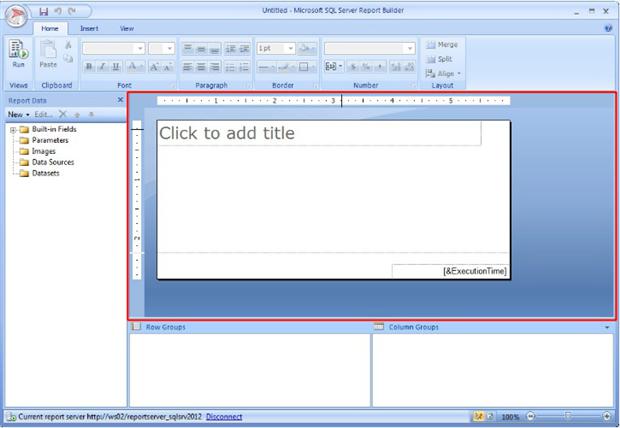APPLIES TO: ✔️ Power BI service ✔️ Power BI paginated reports ✔️ Power BI Premium ❌ Power BI Desktop
Power BI Report Builder is a tool for authoring paginated reports that you can publish to the Power BI service. When you design a paginated report, you're creating a report definition that specifies what data to retrieve, where to get it, and how to display it. When you run the report, the report processor takes the report definition you have specified, retrieves the data, and combines it with the report layout to generate the report. You preview your report in Report Builder. Then publish your report to the Power BI service.
Ready to start authoring? Install Power BI Report Builder from the Microsoft Download Center.
Prefer learning from videos? Check out the Video-based course: Power BI Paginated Reports in a Day.
Sap report builder free download. Report Builder Creating reports is not very easy with VB.net or C# especially if your are using express editions. Install Report Builder. Steps that describe how to install Report Builder. Click Adobe Experience Cloud Analytics Tools Report Builder. Click Download Now to download the 32-bit or 64-bit version (depending on the MS Excel version installed). Open the downloaded installer package. Follow the installation wizard.
The following paginated report features a matrix with row and column groups, sparklines, indicators, and a summary pie chart in the corner cell, accompanied by a map with two sets of geographic data represented by color and by circle size.
Jump-start report creation

Start with the Table, Matrix, or Chart wizard. Create a data source connection, drag and drop fields to create a dataset query, select a layout and style, and customize your report.
Start with the Map wizard to create reports that display aggregated data against a geographic or geometric background. Map data can be spatial data from a Transact-SQL query or an Environmental Systems Research Institute, Inc. (ESRI) shapefile. You can also add a Microsoft Bing map tile background.

Design your report
Create paginated reports with table, matrix, chart, and free-form report layouts. Create table reports for column-based data, matrix reports (like cross-tab or PivotTable reports) for summarized data, chart reports for graphical data, and free-form reports for anything else. Reports can embed other reports and charts, together with lists, graphics, and controls for dynamic Web-based applications.
Report from a variety of data sources. You can create reports that use relational and multidimensional data from SQL Server and Analysis Services, Oracle, Power BI datasets, and other databases.
Modify existing reports. By using Report Builder, you can customize and update reports that were created in SQL Server Data Tools (SSDT) Report Designer.
Modify your data. Filter, group, and sort data, or add formulas or expressions.
Add charts, gauges, sparklines, and indicators. Summarize data in a visual format, and present large volumes of aggregated information at a glance.
Add interactive features such as document maps, show/hide buttons, and drillthrough links to subreports and drillthrough reports. Use parameters and filters to filter data for customized views.
Embed or reference images and other resources, including external content.
Microsoft Ssrs Report Builder Download
Manage your report
Report Builder Download
Save the definition of the report to your computer or to the report server, where you can manage it and share it with others.
Choose a presentation format when you open the report, or after you open the report. You can select Web-oriented, page-oriented, and desktop application formats. Formats include MHTML, PDF, XML, CSV, Word, and Excel.
Set up subscriptions. After you publish the report to the Power BI service, you can configure your report to run at a specific time and send as an e-mail subscription.
Power Bi Paginated Report Builder
Next steps
